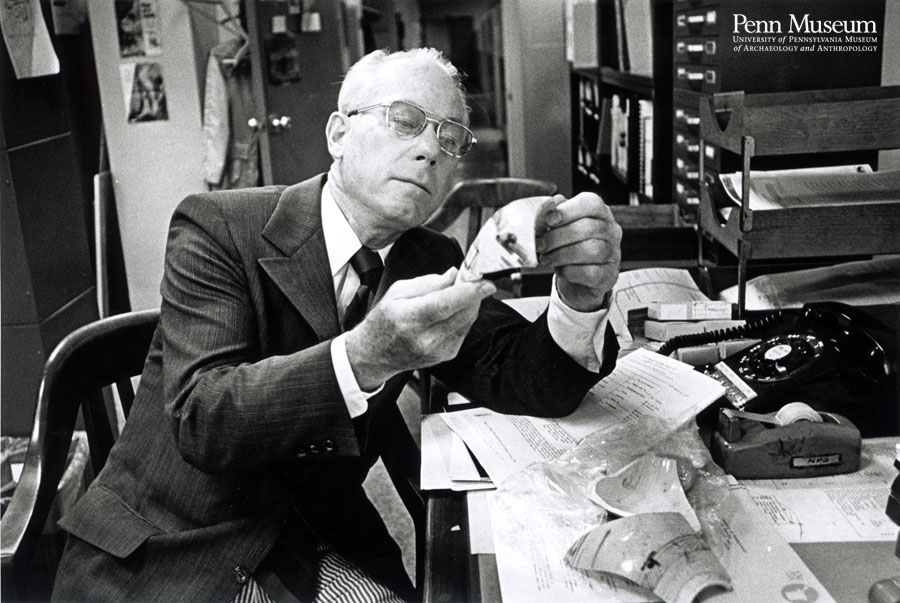
Though based in Philadelphia, the Penn Museum has often neglected the American past to search for places more distant in time and space. Charles C. Abbott and Henry C. Mercer excavated in Pennsylvania and New Jersey in the 1890s, as did J. Alden Mason and others in later years, but it was not until John Cotter (1911–1999) arrived at Penn in 1960 that Philadelphia became the center of a major historical research project.
Cotter began his career in the 1930s working on prehistoric sites of the American Southwest and Southeast. He is best known for his excavations for the National Park Service at Jamestown, Virginia, and Independence Park, Philadelphia. He taught at Penn from 1960 to 1978, offering the first courses in historical archaeology in the United States. Cotter and his students made a number of salvage excavations around the city, from privies to basements to taverns. He synthesized over 30 years of archaeological research at more than 150 sites in Philadelphia and surrounding regions into The Buried Past (with Daniel G. Roberts and Michael Parrington, Penn Press: 1992).
